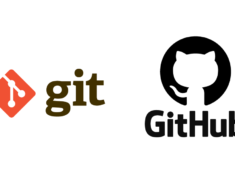
In the fast-paced digital landscape, staying connected with your audience is essential for driving traffic and engagement to your WordPress site. One effective way to achieve this is through push notifications. These instant alerts allow you to reach your visitors directly, even when they’re not actively browsing your site. In this guide, we’ll walk you through the process of setting up push notifications on your WordPress website to enhance traffic and engagement.
Setting Up Push Notifications on Your WordPress Site:
1. Choose a Push Notification Service: Begin by selecting a push notification service. Popular options include OneSignal, PushEngage, and PushAlert. These services offer user-friendly interfaces and WordPress integration.
2. Create an Account: Sign up for an account with your chosen push notification service. After registering, you’ll typically need to verify your website by adding a code snippet to your WordPress site’s header.
3. Install and Configure the Plugin: Most push notification services provide a WordPress plugin for seamless integration. Install the plugin from your WordPress dashboard and follow the provided instructions to connect it to your account.
4. Customize Notification Settings: Once the plugin is connected, you can customize notification settings. This includes selecting the types of notifications to send (e.g., new posts, updates), designing the notification appearance, and setting the timing of notifications.
Implementing Push Notifications on Your Website:
1. Segmentation: To maximize the effectiveness of push notifications, segment your audience based on their interests and behavior. This allows you to send targeted notifications that resonate with different user groups.
2. Opt-In Strategy: Encourage visitors to subscribe to push notifications by strategically placing opt-in prompts on your website. Opt-in prompts can appear as pop-ups, slide-ins, or banners. Clearly communicate the value of subscribing to entice users to opt in.
3. Content Relevance: Ensure that the push notifications you send are relevant and valuable to your audience. Notify them about new blog posts, product launches, promotions, or other updates that align with their interests.
Best Plugin for Push Notifications in WordPress:
One of the most widely recommended plugins for implementing push notifications in WordPress is “OneSignal.” It offers robust features, easy integration, and seamless customization. With OneSignal, you can effortlessly set up and manage push notifications to enhance user engagement and drive traffic to your site.
Effectiveness of Push Notifications for Websites:
Push notifications are a powerful tool for driving traffic and engagement to websites. According to industry data, websites that implement push notifications experience higher click-through rates and increased user engagement. These notifications provide a direct channel to your audience, enabling you to share time-sensitive updates and valuable content effectively.
Conclusion:
By setting up push notifications on your WordPress site, you can tap into a dynamic method of boosting traffic and engaging your audience. The step-by-step process outlined above, along with the recommended plugin, OneSignal, empowers you to deliver timely updates and valuable content directly to your visitors. With the potential to increase click-through rates and enhance user engagement, push notifications are a must-have tool in your digital marketing arsenal.
Dil Bole Oberoi





